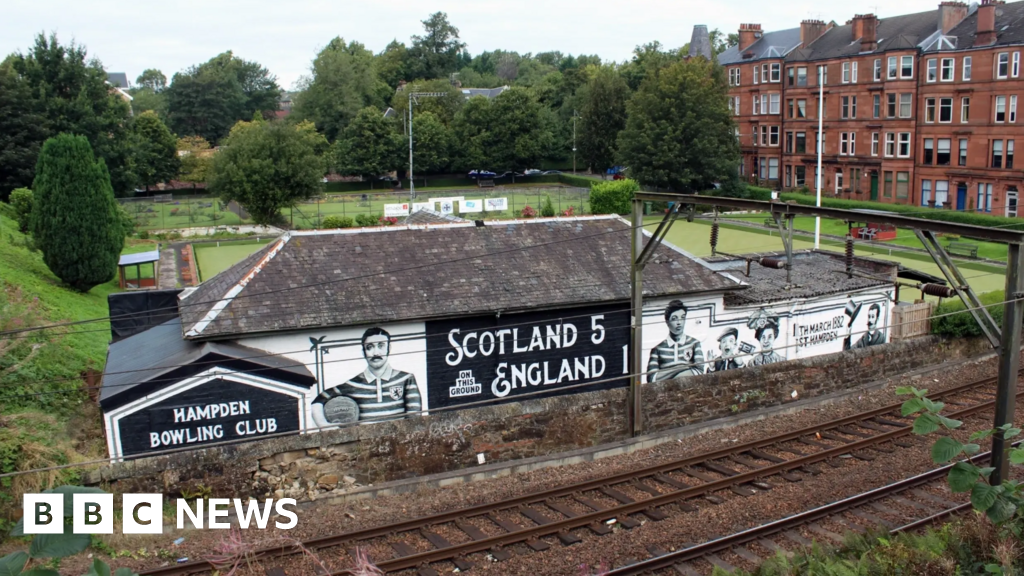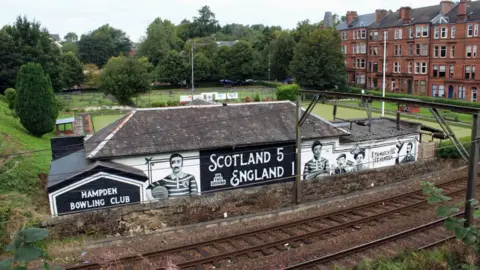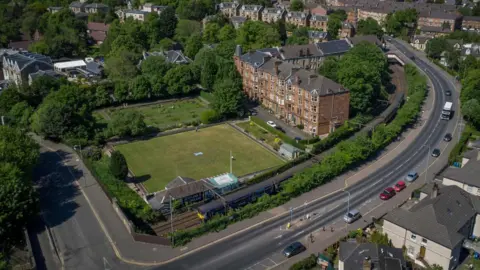Physical Address
304 North Cardinal St.
Dorchester Center, MA 02124
Physical Address
304 North Cardinal St.
Dorchester Center, MA 02124

Jonathan GeddesGlasgow and West Reporter

 Glasgow football tour
Glasgow football tourThe site of the world’s first international football stadium could become flats or a car park unless action is taken, campaigners have warned.
The first HampDen Park on Glasgow’s Southside – described as the “blueprint” for football stadiums since then – is at home in a financial crisis.
When it gets closer, the grounds will be free for commercial use and possible development.
Scotland’s football fans told the BBC it should be “protected and celebrated”. It was the home of Queen’s Park from 1873-1883 and hosted the Scottish Cup finals and Scotland
An extraordinary general meeting for HampDen Bowling Club was held later, with the current club committee set for February 2026.
If no one gets to run the club at that time then it will be wound up and the land will return to Glasgow in the land – the long body of Glasgow Council that manages the local authority.
David Coutts, a Trustee at the Bowling Club, told BBC Scotland: “There’s no good building there and you have to take the history out – but there’s class history there.
“It is from this site and this green that the greatest sport in the world has developed.”

 Campbell Ramage
Campbell RamageAn archaeological dig took place at the site in 2021, and found remains of the original football stadium – where Scotland famously beat England 5-1 in 1882.
When Queen’s Park built the Stadium, Scottish teams often played on converted Cricket pitches, such as the West of Scotland ground where Scotland and England played the first international in 1872.
Lindsay Hamilton runs a walking tour company and takes customers around three different HampDen Park sites built over the decades.
He believes that the original set the template for football venues ever since.
He said: “This land is the blueprint for every football stadium that is built. Queen’s Park has built world-class grandballs.
“This was the first place where season tickets were first used, or membership books as they were called.
“How we experience football today is all built first on that site – it’s very important to football.”

 Glasgow football tour
Glasgow football tourDespite the importance, the future murmur for the site.
Queen’s Park left the ground to move to another purpose-built stadium near Crosshill in 1884, using the name HampDen for their new home.
The HampDen Bowling Club used the place since 1905, but a decline in the membership rolls left about 50 people – a situation said to be on its last legs. ”
The club has a rotating monthly lease for the site, but has yet to secure a longer-term property deal with the city.
“We can’t get any funding because we need a higher lease than what we have, and the lease offered is a basic commercial lease – we’re not a commercial organisation.
“We’ve seen other bowling clubs become commercial sites after closing and that usually means blocks of flats or car parks.”

 David Coutts
David CouttsClub members hope the local community may express interest in acquiring the site, perhaps using it as a community hub for events and film screenings.
So they have decided to hold an egm instead of waiting for the Club’s usual AGM next year, which will hopefully attract more local people to attend and get involved.
For MS Hamilton, what matters is ensuring the site remains somewhere you can experience.
He said that a person walking around or drinking in the club, they are still combined in the early days of football, a far cry from the global industry that follows.
“A lot of early football landmarks in other cities have become Supermarket car parks or things like that, but here you can step into it – see it.
“When you lose yours, you lose the magic and the spark, because having the green there brings it to life.
“It doesn’t look like a pitch now, but the foundations of the original stadium are there – what else can we know? If it’s in London or Buenos Aires it has its own museum there.
“It should be protected, and celebrated.”